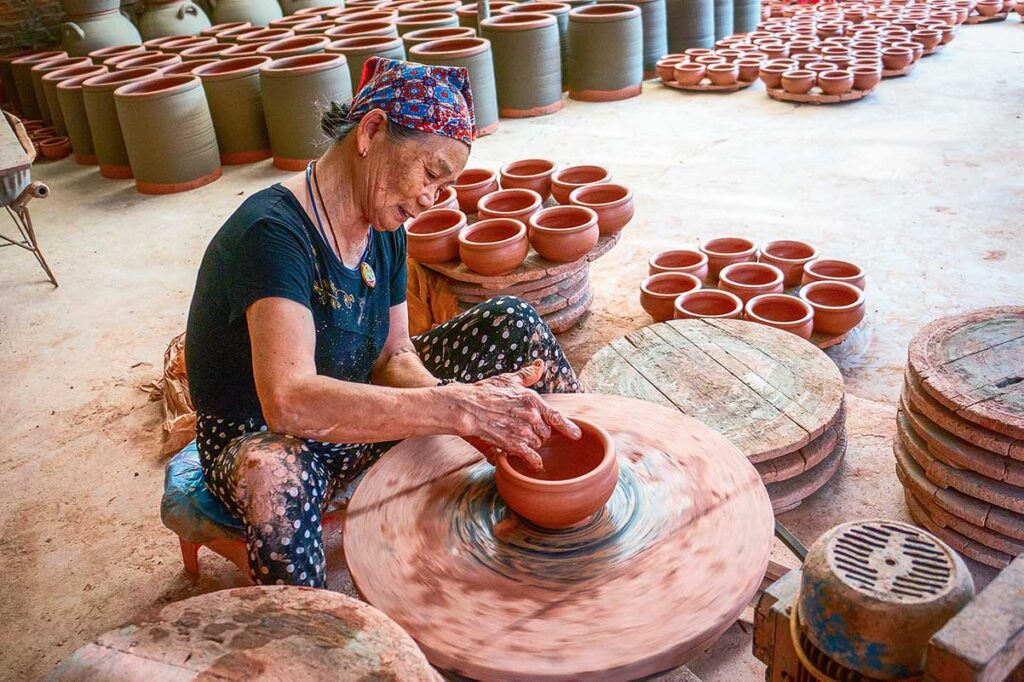History of Phu Lang Pottery Village
Craft Villages Around Hanoi and the Role of Rivers
For centuries, Hanoi has been surrounded by craft villages specializing in everything from ceramics and paper to woodwork and folk painting. These villages weren’t randomly placed—they developed along rivers and canals that connected them to the capital. Waterways like the Red River and Cau River made it easy to transport goods, and this close access helped supply Hanoi with not just materials, but also cultural and artisanal value.
Craft villages became an essential part of northern Vietnam’s identity, each with its own specialty. Some, like Bat Trang, became famous and commercialized; others, like Phu Lang, remained more local and community-driven. Their shared lifeline was the river—and that’s exactly what shaped Phu Lang’s development too.
Origins and Development of Phu Lang
The pottery tradition in Phu Lang is said to date back to the early 13th century, during the Tran Dynasty. According to legend, a man named Luu Phong Tu—an envoy sent to China during the Ly Dynasty—brought ceramic-making techniques back to Vietnam. After settling in the Red River Delta, he passed his knowledge on to local villagers, including those along the Cau River in what is now Phu Lang Commune.
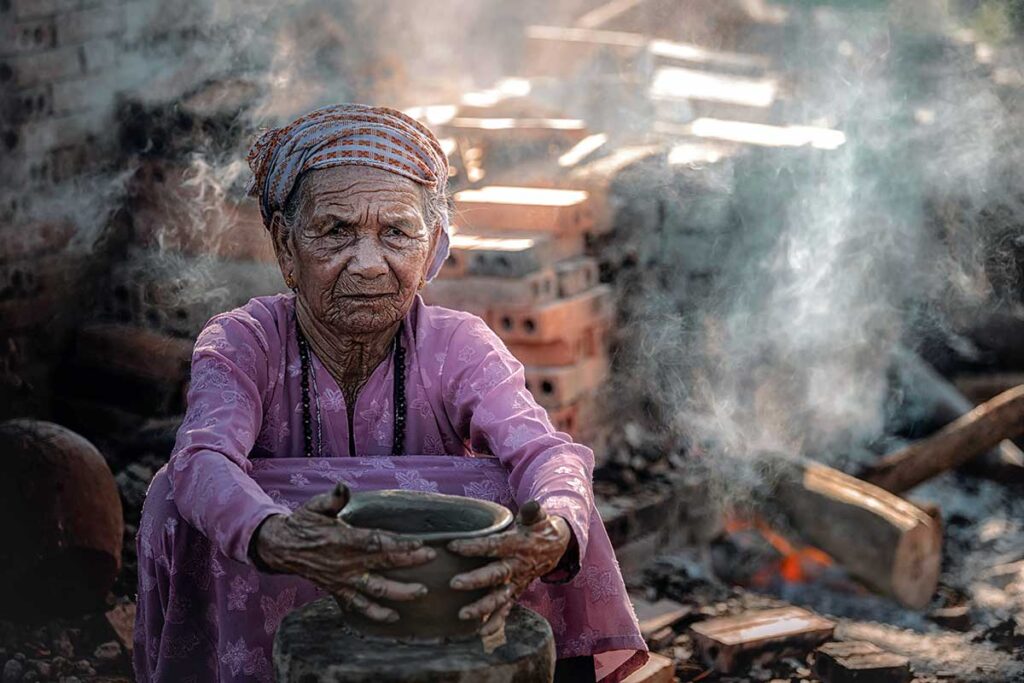
From then on, pottery became a way of life in Phu Lang. Using red clay transported from neighboring Bac Giang and firing their work in wood-burning kilns, the villagers developed a rustic yet durable style of ceramics. Their techniques were passed down through generations, with families preserving not only the skills but also the secrets behind their unique glazes.
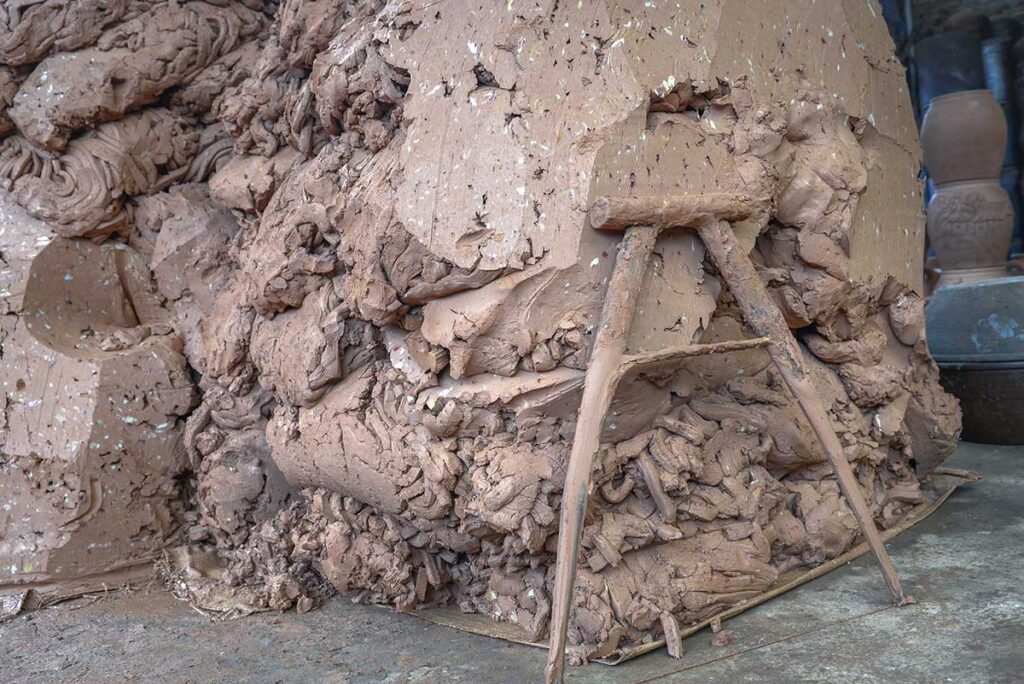
Today, pieces of Phu Lang pottery from the 17th to 19th centuries can be found in the Vietnam National Museum of History, offering a glimpse into the long tradition of craftsmanship that still survives in the village.
About Phu Lang Pottery – What Makes It Unique
If you’re interested in the craft itself, Phu Lang pottery stands out for its materials, techniques, and distinctive glaze—quite different from what you’ll see in more commercialized pottery villages like Bat Trang.
Materials and Glaze
Phu Lang ceramics are made from red clay brought in by boat from Bac Giang Province, just across the Cau River. This clay is known for its high heat resistance and durability, making it ideal for larger items like jars and urns.
What really sets Phu Lang apart is the glaze. The recipe varies from family to family and is often considered a closely guarded secret. In general, it’s made by mixing tree ash (from wood types like tali, ironwood, and apitong) with limestone, gravel, alluvial mud, and water. After filtering and drying, the glaze becomes a viscous liquid that’s applied before firing.
The result is a set of earthy, natural glaze tones—especially eel skin, frog skin, and other mottled or crackled finishes that change subtly depending on the kiln temperature and wood used.
Techniques and Products
Most Phu Lang potters still use manual wheels and hand tools to shape their products. Some items are wheel-thrown, while others—especially ceremonial or decorative pieces—are made using wooden or plaster molds.
Decoration is done by embossing, carving, or painting by hand. Unlike glossy, polished ceramics you’ll find elsewhere, Phu Lang pieces often have a rugged texture and a more organic look.
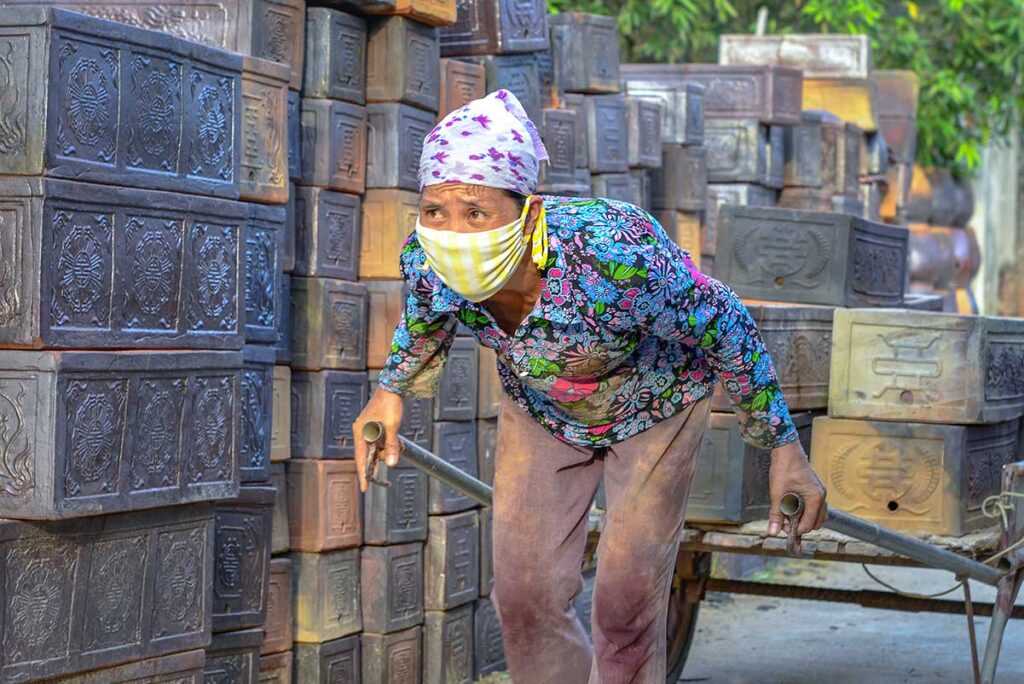
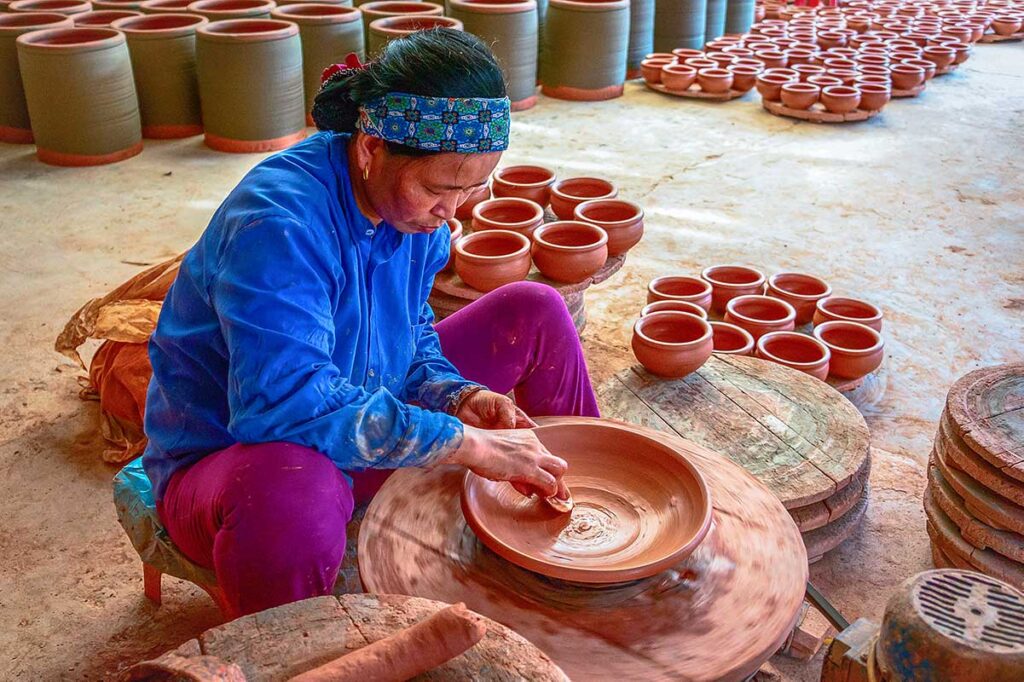
Typical products include:
- Urns and jars for storage or spiritual use
- Flower vases, pots, and cookware
- Wall murals and ceramic art pieces, often custom-made or mosaic-style
- More rarely, modern design items for export, though still crafted using traditional methods
This mix of tradition, manual techniques, and locally sourced materials gives Phu Lang pottery a quiet, authentic character that reflects the pace and lifestyle of the village itself.
Highlights of Visiting Phu Lang Pottery Village
Visiting Phu Lang today, you’ll find a quiet riverside village where pottery is still made using traditional methods. It’s not a tourist hotspot, and there are no big museums or commercial workshops—but that’s part of its charm. If you’re curious and willing to explore slowly, there are a few simple, worthwhile experiences.
1. Explore the Pottery Workshops
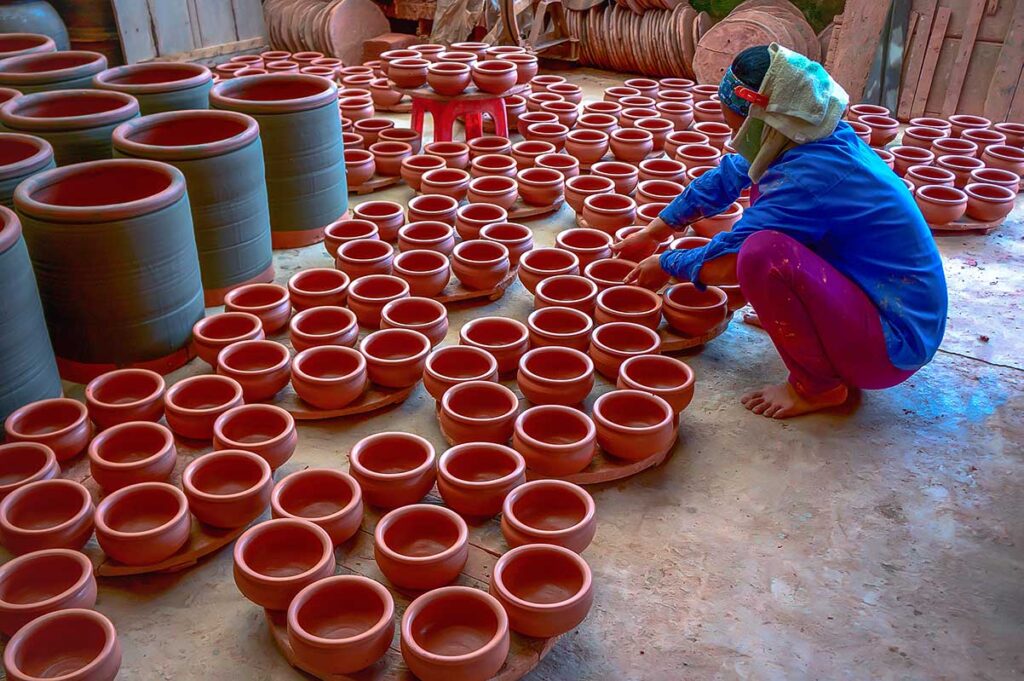
Many families in Phu Lang still produce pottery in their backyards or small workshops. You’ll see urns, storage jars, vases, wall art, and more laid out to dry along the narrow village alleys. It’s easy to wander around on foot and peek into open courtyards filled with ceramics. Some households welcome visitors to browse, chat, and even buy pieces directly—just be respectful and friendly.
2. Watch the Firing Process (If Lucky)
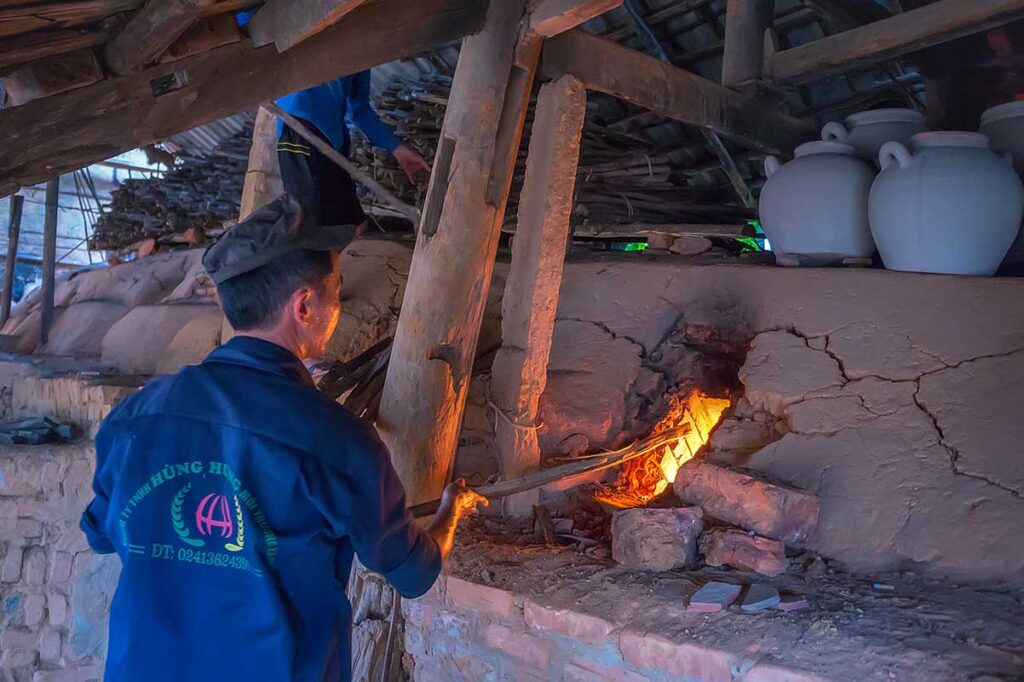
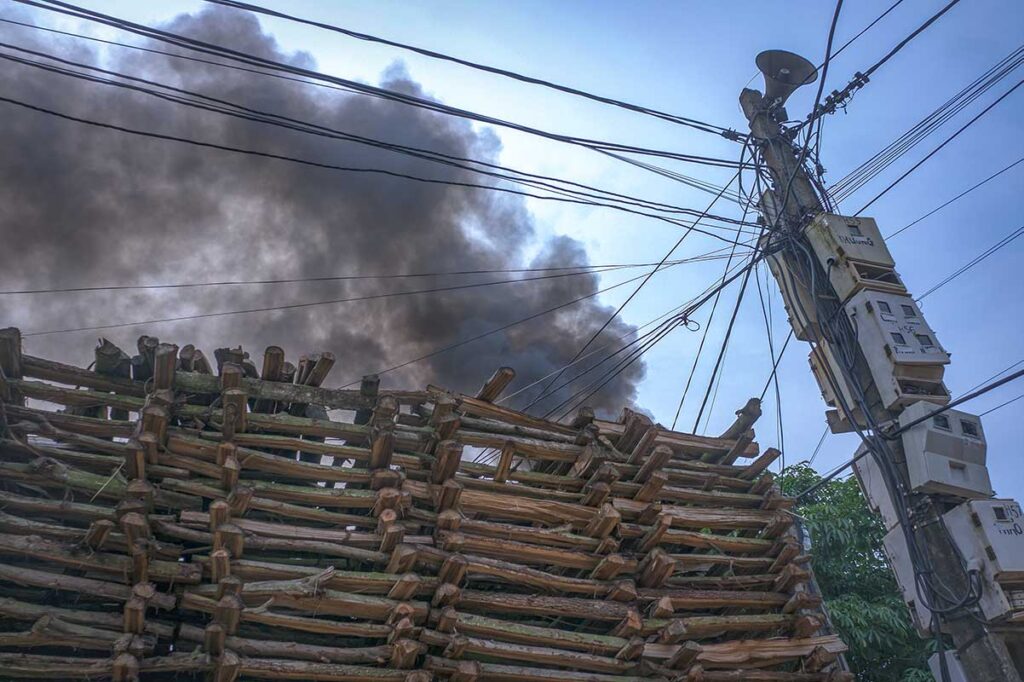
Phu Lang is one of the few places where some potters still use a traditional wood-fired dragon kiln (lò rồng). These kilns, built into gentle slopes, give Phu Lang ceramics their signature glaze texture and earthy finish. However, firings only happen occasionally, often when there are bulk orders or enough pieces ready—so unless your timing is lucky, you might not catch one in action.
3. Riverside Walks and Local Life
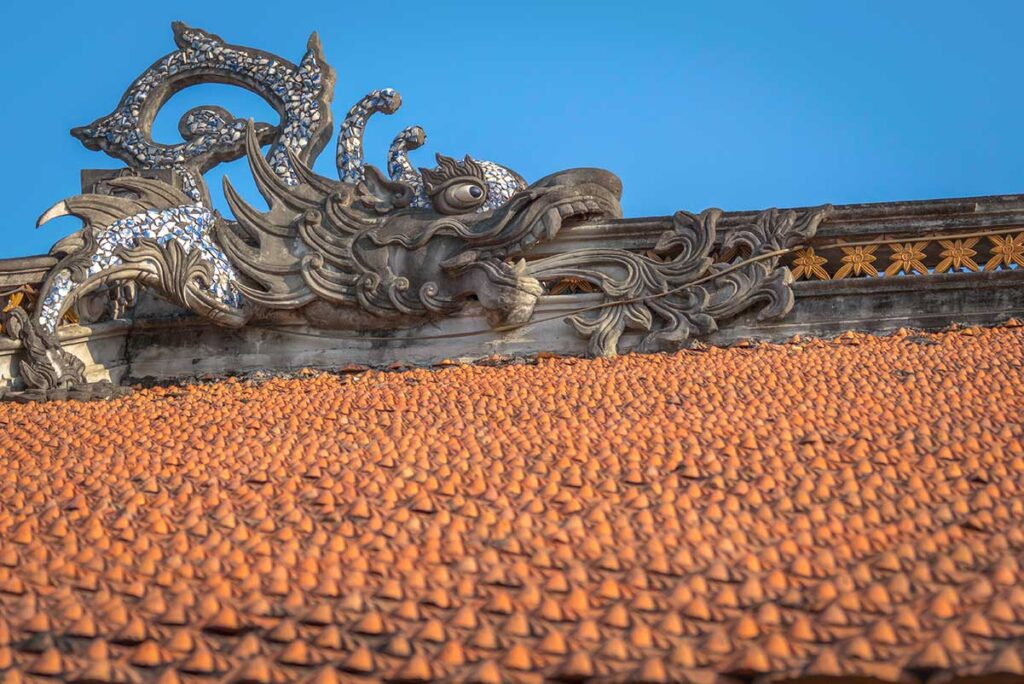
The Cau River runs quietly along the edge of the village, giving it a peaceful, slow-paced feel. Brick alleyways weave between pottery-lined yards, older kilns, and family homes. There’s no pressure to buy or join a tour—it’s more about observing everyday life in a craft village that hasn’t been built around tourism. You’ll likely be greeted with smiles, and maybe even an invitation for tea if you’re lucky.
4. Optional: Try Pottery Making (If Available)

Some guesthouses or small community spaces offer hands-on pottery sessions, where you can try your hand at shaping a basic pot or plate. These experiences are usually very informal, not advertised, and may require advance arrangement. If you do find one, the cost is low (around 20,000 VND) and it can be a fun way to engage with the local craft—even if the result is a bit wobbly.
Location and How to Get There
Where is Phu Lang Pottery Village?
Phu Lang Pottery Village is located in Phu Lang Commune, Que Vo District, in Bac Ninh Province. It sits along the Cau River, surrounded by quiet countryside and farmland. The village is about 60 kilometers from Hanoi’s Old Quarter, and the journey typically takes 1.5 hours by car, depending on traffic.
From Hanoi to Phu Lang Pottery Village
- Private car with driver – This is the most realistic and comfortable option, especially if you want to explore at your own pace or combine the trip with nearby stops in Bac Ninh. It also avoids the hassle of multiple transfers or navigation.
- Motorbike – Possible for experienced riders with a valid license. The roads are in decent condition, but the trip is long, and the scenery along the way is mostly urban or industrial—not particularly enjoyable for leisure riders.
- Public transport – Not recommended. There are no direct buses or trains to Phu Lang, and reaching the village by public transport would require multiple local connections and walking. Unless you speak Vietnamese and are comfortable with local logistics, it’s best to avoid this option.
Is Phu Lang Pottery Village worth visiting?
For most travelers, Phu Lang Pottery Village is probably not worth the trip on its own. It’s a 1.5-hour drive from Hanoi, and while the village is peaceful and authentic, it lacks the tourist infrastructure, variety, and activities you’ll find in more accessible craft villages like Bat Trang.
That said, if you’re already deeply interested in traditional pottery—especially wood-fired techniques and rural craftsmanship—Phu Lang offers a more local, less commercialized experience. It’s quiet, the people are welcoming, and you’ll get a genuine sense of how this centuries-old craft is still practiced in a working village.
Phu Lang makes more sense as a stop on a broader trip through the Bac Ninh region, perhaps combined with nearby pagodas, rural temples, or other lesser-known cultural sites. But if you only have time for one pottery village, and accessibility and activities matter to you, Bat Trang is the better choice.
Phu Lang or Bat Trang – Which One to Visit?
If you’re deciding between the two, Bat Trang is the clear choice for most travelers. It’s only 30 minutes from Hanoi, easy to reach by taxi or bus, and offers more organized workshops, museums, shops, and hands-on activities—ideal for a first-time visit or a short cultural outing.
Phu Lang, on the other hand, is a more local and rustic experience. It sees far fewer tourists, and the wood-fired kilns and slower pace reflect a traditional way of life that hasn’t been shaped by tourism. But with fewer services, limited signage, and minimal activities, it’s better suited for those who’ve already been to Bat Trang or are specifically seeking something off the beaten track.
If pottery is your main interest, start with Bat Trang (see our full guide to Bat Trang Pottery Village). Consider Phu Lang if you’re after a quiet countryside experience or want to explore lesser-known craft villages around Bac Ninh.
